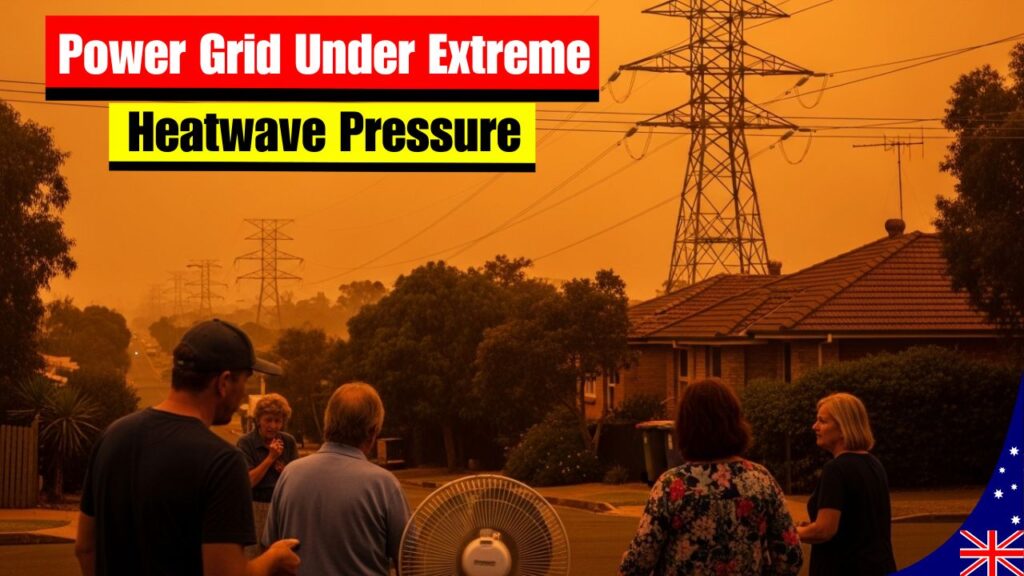Australia Electricity Outage Risk Rising – The rising summer temperatures across Australia are putting extreme pressure on the national power grid, and from 27 November onward, authorities are warning of a higher risk of unexpected electricity outages. As the heatwave intensifies, demand for cooling systems is expected to surge, pushing energy infrastructure to its limits. This article explains why the risk is increasing, how officials are responding, and what households can do to stay prepared. Australians are being urged to stay informed, follow energy-saving measures, and understand the latest updates before the hot season peaks.

Electricity Outage Risk for Australian Citizens
The electricity outage risk for Australian citizens is expected to rise significantly as the 27 November heatwave approaches, largely due to the extreme load placed on the national energy network. During periods of sustained high temperatures, households rely heavily on air conditioning and cooling appliances, resulting in sharp spikes in power consumption. This increase pushes the grid beyond normal capacity, raising the likelihood of rolling blackouts or sudden supply cuts. Energy authorities have already initiated monitoring protocols and are urging citizens to reduce usage during peak hours to help stabilise the grid and avoid service disruptions across the country.
 Senior Health Card Expansion From 27 November to Open Access for Thousands of Older Australians
Senior Health Card Expansion From 27 November to Open Access for Thousands of Older Australians
Heatwave Pressure Affecting the Australia-Wide Grid
The heatwave pressure affecting the Australia-wide grid is driven by a combination of unusually high temperatures, limited backup supply capacity, and ageing electrical infrastructure. As heatwaves intensify, transmission lines and substations experience thermal stress, lowering their efficiency and increasing the risk of technical faults. Authorities across Australia are implementing early-warning systems and adjusting load management to prevent widespread outages. Households and businesses are also encouraged to prepare emergency plans, conserve electricity where possible, and stay alert to official notifications as grid operators balance rising demand with available resources in real time.
| Factor | Impact on Power Grid |
|---|---|
| High temperature surge | Increases electricity demand and overloads systems |
| Air conditioner usage | Sharp rise in peak-hour consumption |
| Ageing infrastructure | Higher chance of technical faults or breakdowns |
| Limited backup supply | Reduces flexibility during high-demand periods |
| Heatwave duration | Prolonged stress on the national grid |
Power Grid Stability Concerns Across Australia
Power grid stability concerns across Australia are increasing as the heatwave-driven electricity load continues to surge. When temperatures remain high for extended periods, energy operators must manage fluctuating usage patterns and maintain safe voltage levels to avoid system failures. This balancing act becomes more challenging when multiple regions face peak consumption simultaneously. The 27 November alert has prompted operators to increase coordination between state networks, activate reserve capacity, and provide regular public updates. Australians are also urged to check backup energy options, reduce non-essential usage, and stay informed on potential outage times during heatwave conditions.
Energy Supply Preparedness for Australians
Energy supply preparedness for Australians has become essential as the risk of outages grows during this intense heatwave period. Households are being encouraged to review emergency plans, ensure backup lighting options are available, and keep essential devices charged in case of sudden disruptions. The national weather and energy authorities recommend maintaining hydration, reducing indoor heat exposure, and limiting heavy appliance usage during peak hours. These preparedness steps help individuals stay safe while also supporting grid operators who are working to balance rising electricity demand with system capacity across the nation.
Frequently Asked Questions (FAQs)
1. Why are electricity outages more likely during heatwaves?
Heatwaves increase electricity demand and cause stress on energy infrastructure, raising outage risks.
2. What can households do to reduce outage chances?
Households can reduce peak-hour usage, avoid heavy appliances, and follow official energy-saving advice.
3. Will the 27 November heatwave affect all regions?
Most regions may experience higher risk, but impact levels depend on local grid capacity and weather intensity.
4. How can Australians prepare for a sudden power cut?
They can keep devices charged, store backup lighting, stay hydrated, and follow emergency guidelines.



